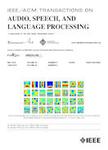版权所有:内蒙古大学图书馆 技术提供:维普资讯• 智图
内蒙古自治区呼和浩特市赛罕区大学西街235号 邮编: 010021

作者机构:Johannes Kepler Univ Linz Inst Computat Percept CP JKU A-4040 Linz Austria Johannes Kepler Univ Linz LIT Artificial Intelligence Lab A-4040 Linz Austria
出 版 物:《IEEE-ACM TRANSACTIONS ON AUDIO SPEECH AND LANGUAGE PROCESSING》 (IEEE ACM Trans. Audio Speech Lang. Process.)
年 卷 期:2024年第32卷
页 面:2227-2241页
核心收录:
学科分类:0808[工学-电气工程] 08[工学] 0702[理学-物理学]
主 题:Dynamic convolutional neural networks dynamic convolution dynamic ReLU coordinate attention audio spectrogram transformer audio classification pre-trained audio models knowledge distillation
摘 要:The introduction of large-scale audio datasets, such as AudioSet, paved the way for Transformers to conquer the audio domain and replace CNNs as the state-of-the-art neural network architecture for many tasks. Audio Spectrogram Transformers are excellent at exploiting large datasets, creating powerful pre-trained models that surpass CNNs when fine-tuned on downstream tasks. However, current popular Audio Spectrogram Transformers are demanding in terms of computational complexity compared to CNNs. Recently, we have shown that, by employing Transformer-to-CNN Knowledge Distillation, efficient CNNs can catch up with and even outperform Transformers on large datasets. In this work, we extend this line of research and increase the capacity of efficient CNNs by introducing dynamic CNN blocks constructed of dynamic convolutions, a dynamic ReLU activation function, and Coordinate Attention. We show that these dynamic CNNs outperform traditional efficient CNNs, such as MobileNets, in terms of the performance-complexity trade-off at the task of audio tagging on the large-scale AudioSet. Our experiments further indicate that the proposed dynamic CNNs achieve competitive performance with Transformer-based models for end-to-end fine-tuning on downstream tasks while being much more computationally efficient.